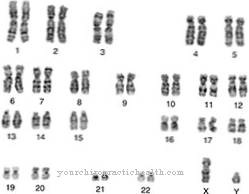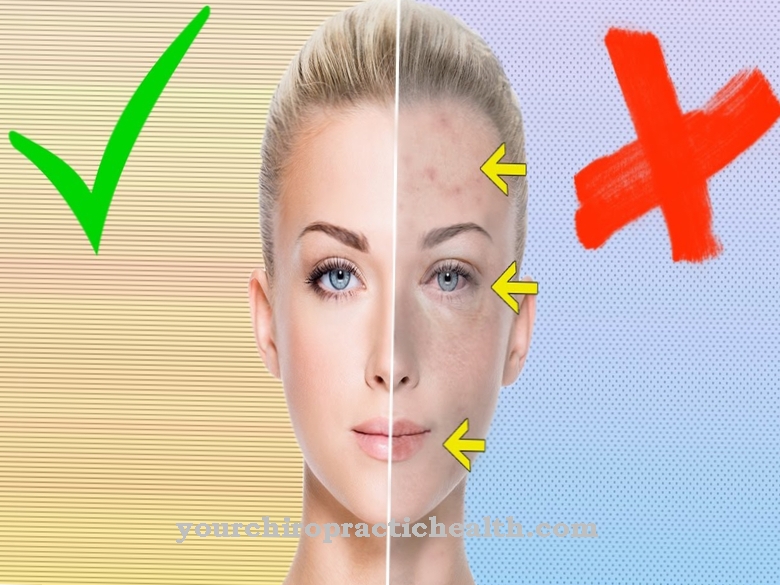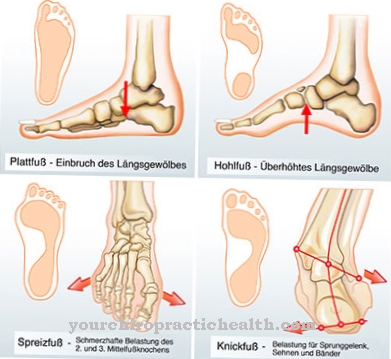The predominantly occurring in Africa Sleeping sickness or. Trypanosomiasis is a tropical disease that is usually transmitted through the bite of an infected tsetse fly. If left untreated, sleeping sickness leads to death from destruction of the central nervous system.
What is sleeping sickness?

© 3drenderings - stock.adobe.com
The Sleeping sickness (trypanosomiasis) is a parasitic disease of humans and animals caused by protozoa of the genus Trypanosoma brucei. The carrier of the disease is the tsetse fly.
The endemic sleeping sickness occurs mainly in more than 35 countries south of the Sahara. It is estimated that at least 100,000-300,000 people are infected annually. In 2008 alone, 48,000 people died of sleeping sickness. The term "sleeping sickness" is derived from the symptoms of the neurological phase:
Confusion, reduced coordination and disruption of the sleep cycle, attacks of tiredness with manic phases, interrupted sleep for days and nocturnal insomnia. Without treatment, sleeping sickness can progress from progressive mental decline to coma and death.
causes
Caused by the Sleeping sickness is the parasite Trypanosoma brucei, transmitted by a bite from the tsetse fly (genus Glossina). For further treatment, the infection with Trypanosoma brucei gambiense, Trypanosoma brucei brucei and Trypanosoma brucei rhodesiense must be distinguished.
The large, brown tsetse fly transfers metacyclic trypomastigote cells into the skin tissue to the host at a risk of 1: 1,000 during blood sucking. In the space between the cells, the cells transform into single-cell parasites, which penetrate deeper and deeper into the host via the lymphatic system and blood circulation, constantly multiplying.
Sleeping sickness can also be transmitted by mother-child infection if the placenta is infected. Contaminated medical equipment or blood transfusions as well as sexual contact can also be sources of infection for sleeping sickness.
Symptoms, ailments & signs
Sleeping sickness is transmitted by the sting of the tsetse fly. It can take a few days or weeks for the puncture site to turn red and painful. The technical term for this is trypanosome chancre. The punctures are often found in the neck or face area. After the puncture, the germs spread throughout the body.
The lymph nodes swell and attacks of fever occur. The person concerned feels limp and has headaches and body aches. In addition to chills, kidney problems can also occur if the organ is affected. As the disease progresses, it affects the central nervous system.
The disease owes its name to the disturbances in the sleep-wake cycle that are now occurring. The patient suffers cramps and paralysis. The symptoms also affect general behavior. Those affected react moodily and irritably. In the terminal stages of the disease, the patient falls into a coma. If left untreated, sleeping sickness is fatal.
A distinction is made between West African and East African sleeping sickness. The West African form is slower and it can take weeks for symptoms to appear. It can take years for changes in personality to be felt. East African sleeping sickness is faster and more aggressive. The symptoms described appear after just a few days and death from organ failure occurs after a few months.
Diagnosis & course
It can often be several months after the infection before symptoms appear Sleeping sickness occur. The multiplication of the trypanosomes (hemolymphatic phase) initially brings with it attacks of fever, headache, joint pain and itching can also occur. In the second stage of sleeping sickness (neurological phase), the parasites cross the blood-brain barrier and attack the central nervous system.
At this point, the symptoms of sleeping sickness are evident: changes in behavior, confusion, impaired perception, and poor coordination. The most important characteristic of the second stage of sleeping sickness is the disruption of the sleep cycle.
Screening with microscopic examinations of lymph node aspiration, blood, or bone marrow, and clinical symptoms (swollen lymph nodes along the neck) may be screened for infection (visible reddening of the skin). If sleeping sickness is present, a diagnosis of the disease status can be made by CSF puncture.
The earlier the disease is recognized, the better the prospect of a cure. Diagnosis before the neurological phase begins can avoid complicated and risky treatment for sleeping sickness.
Complications
Sleeping sickness is transmitted by a sting from the tsetse fly, and the sting is already a very painful affair. Of course, sleeping sickness is also associated with various complications, which as a rule should always be treated by a doctor. In many cases, there is severe swelling immediately after the sting.
Long-term cooling of the affected area can counteract this complication very well. Sleeping sickness runs in phases. This means that even a short-term improvement can occur. Nevertheless, various complications can arise in retrospect that urgently require medical treatment. Often an increased temperature occurs in connection with sleeping sickness, which can cause a general malaise. Lymph node swelling, body aches and headaches can also occur.
If no appropriate doctor is consulted with these symptoms, then further complications are definitely to be expected. The elevated temperature can develop into a very severe fever. Bacteria and viruses spread throughout the body, which can lead to a serious infection. In general, if you want to avoid possible complications from sleeping sickness, you should seek medical and drug treatment at an early stage.
When should you go to the doctor?
Occasional daytime sleepiness is not a cause for concern and can be normal. If there is a strong need to sleep, which may be associated with a loss of control of the muscles (cataplexy), an unusual sleep / wake rhythm and sleep paralysis, sleeping sickness (narcolepsy) should be considered. If you have these symptoms, it makes sense to see a doctor. People who have narcolepsy may also find that they are overwhelmed by sleep while walking, which is dangerous in traffic.
It is not easy for doctors to clearly diagnose narcolepsy because the symptoms cannot be clearly differentiated from depression or epilepsy or can be mistakenly interpreted as laziness. Sometimes it can take years to get the correct diagnosis. In any case, those affected should always go to the doctor if they observe several of the symptoms and are therefore severely restricted in everyday life. This is especially the case when cataplexy and short-term paralysis occur in addition to drowsiness. The faster the diagnosis can be made, the better it is for the patient.
Treatment & Therapy
The drug-only type of inpatient treatment depends on the stage of the Sleeping sickness from. The drugs in the first stage of treatment are less toxic and easier to use. Despite not inconsiderable side effects, pentamidine (Tb gambiense) used intravenously or intramuscularly is generally well tolerated.
The intravenous active ingredient suramin (Tb rhodesiense) can cause side effects on the urinary tract or allergic reactions. The current standard therapy for the second stage (neurological phase) of sleeping sickness is the daily intravenous administration of 2.2 mg / kg body weight melarsoprol for 12 consecutive days, which can, however, cause considerable side effects - in the worst case fatal encephalopathy.
The newer drug eflornithine (Tb gambiense) - due to the labor-intensive administration and the cost intensity only used as an alternative treatment for sleeping sickness - is more tolerable and very successful. The combination treatment of nifurtimox and eflornithine, introduced in 2009 for the treatment of sleeping sickness, additionally simplifies the use of eflornithine in monotherapy.
prevention
Currently there is to avoid infection with the Sleeping sickness no vaccine or preventive medication. The preventive administration of pentamidine has proven effective, but this is medically controversial. Travelers are therefore advised to avoid insect bites by wearing light-colored clothing that completely covers the body and using insect nets.
Aftercare
Independent follow-up care for those affected by narcolepsy is particularly associated with cataplexy. Despite taking medication, acute muscle failure can occur in conjunction with severe need for sleep. Since these cannot be foreseen, your own actions should be adapted if possible so that no injuries or the least possible injuries occur in the event of a fall.
The "correct" fall to avoid pain can be learned professionally from a physiotherapist, for example. In addition, if possible, a person should always accompany the person concerned in public so that he can intervene in dangerous situations if necessary. However, if this cannot be permanently implemented, strangers should also be informed at potentially dangerous locations, such as long (escalating) stairs, who can act correctly in an emergency and prevent accidents.
Despite the sleep attacks during the day, it is important to keep a regular night's sleep in order to maintain the natural sleep rhythm and not to provoke avoidable narcoleptic attacks by missing sleep overnight the next day. If narcolepsy occurs in public without an accompanying person, the name and a small description of the disease in the form of a small piece of paper in the jacket or trouser pocket can quickly provide the helpers or paramedics with information and prevent unnecessary treatments.
You can do that yourself
Nothing can be done preventively against sleeping sickness or narcolepsy, nor can it be cured according to the current state of science. Nevertheless, in addition to medical care, patients have a number of options available for themselves to ensure that they can cope better in their professional and everyday lives.
First of all, those affected should make themselves aware that they are not alone. For this purpose, it can be useful to join a self-help group. Since narcolepsy patients often tend to withdraw socially, mutual exchange in a group can give those affected new courage. Patients are also given tips and coping strategies that can make life easier for them. In addition, those affected should inform their social environment about the disease. This creates understanding and in tricky situations, such as sudden sleep attacks or cataplexies (seizures), help is quickly available. Several sleep episodes of five to fifteen minutes a day can improve the ability to concentrate.
In addition, frequent eating of smaller meals and the avoidance of alcohol relieve the body. Sports activities can have a positive effect on longer periods of wakefulness.
Choosing a competent specialist is very important. In the best case scenario, this is a trained sleep specialist. The doctor should address the narcolepsy patient's personal needs and questions.













.jpg)

.jpg)
.jpg)











.jpg)